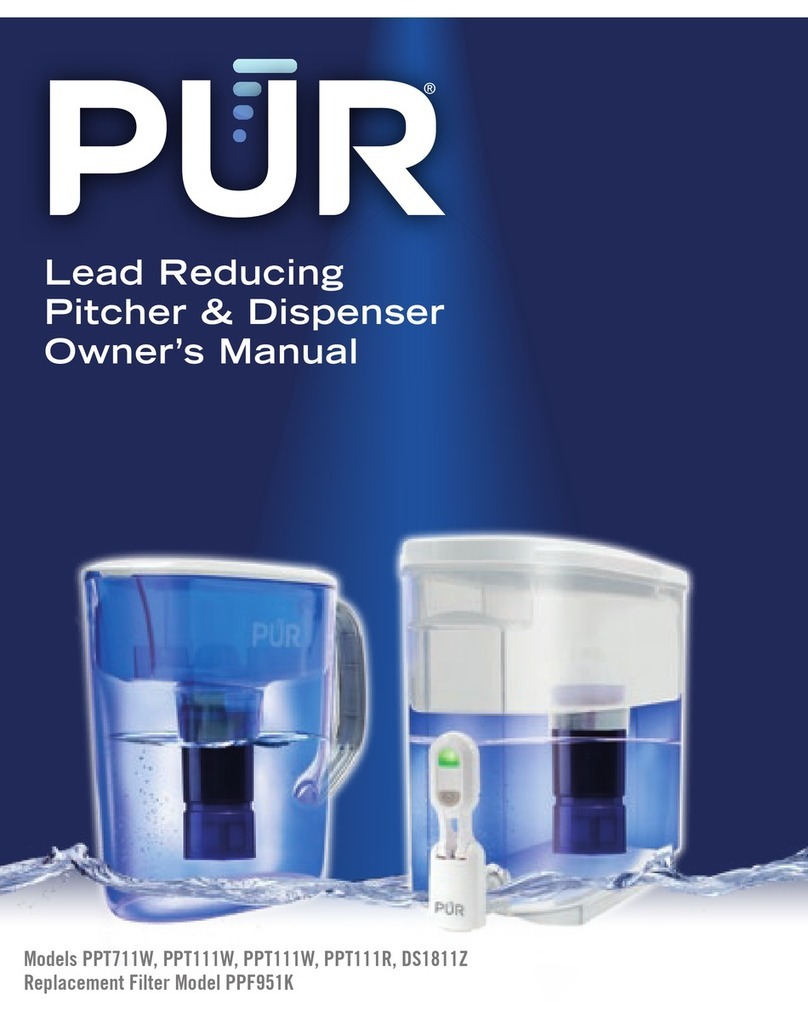
1
Safety Precautions:
• IMPORTANT: Refrigerants must be handled and disposed of by qualified service personnel only. Before discarding this water
dispenser to landfill, contact local authorities for advice on proper disposal methods for refrigerants.
• This Water Dispenser is designed for “indoor” use only. DO NOT USE OUTDOORS.
• Never turn the dispenser upside down or tilt more than 45 degrees. During transportation, if the dispenser was transported
sideways, the unit must be left to stand upright for 12 hours before connecting to power source and initiating operation.
• This Water Dispenser is equipped with a grounded power cord and plug for your safety.
• Keep your Water Dispenser in a dry place away from any heat source and direct sunlight.
• Never put anything flammable close to the dispenser.
• Leave a minimum of 2” (5cm) around the back and sides of the dispenser for proper ventilation.
• Always install your Water Dispenser on a level, solid floor.
• Wait 3 minutes before restarting dispenser after shutting it down.
• Always unplug (disconnect) the Water Dispenser power cord before servicing, cleaning and filter replacement.
• Service must be performed by qualified/authorized service personnel only. Service information is available through our
• Regular cleaning of your Water Dispenser is required for your warranty.
• Please follow the cleaning and maintenance instructions outlined in this manual. Cleaning should be done every 4 ~ 6 months.
• It is your responsibility to ensure that all water line connections are properly connected and sealed and there are no system
water leaks before operating the unit.
• Although this unit incorporates provision of a hot water “child resistant safety switch," never allow children to dispense hot
water without proper and direct supervision.
• Only use original PUR filters with this unit. (Part # PQCSED and PQCCRBL).
DANGER: The hot water in this dispenser is heated to approximately 90°C (194°F).
Temperatures above 52°C (125°F) can cause severe burns from scalding.
Safety Precautions ..................................................................1
Pre-Operation...........................................................................2
* Grounding Precautions .....................................................2
* Specifications...................................................................2
Water Dispenser Layout and Components ................................3
Installation Instructions......................................................4 - 7
* Copper Pipe Plumbing ......................................................4
* Flexible Pipe Plumbing......................................................4
* Installation Location.........................................................5
* Water Line Hook-Up .....................................................5 - 6
* Filter Installation..............................................................6
* Water Leakage Detection System......................................7
* Filter Replacement............................................................7
Initial Product Cleaning ......................................................7 - 8
Operation Instructions.......................................................8 - 10
* Dispensing Hot Water .......................................................9
* Dispensing Cold Water......................................................9
* Adjusting the Cold Water Temperature..............................9
Cleaning and Maintenance ...............................................9 - 10
* Cleaning the Drip Tray ......................................................9
* Cleaning the Outside of the Dispenser .............................9
* Internal Reservoir Overflow Protection............................10
* Draining the Reservoirs ..................................................10
* Going Away on Vacation..................................................10
Performance Data Sheet..................................................10 - 11
Troubleshooting Guide............................................................11
Warranty.................................................................................12
Table of Contents:





























